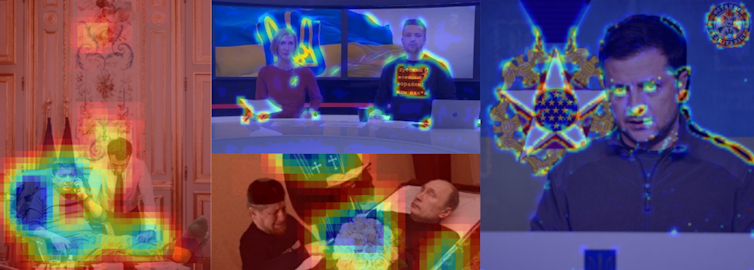
Frederic J. Brown/AFP via Getty Images
Jena Martin, St. Mary’s University
The postmaster general is responsible for getting billions of pieces of mail across the globe, managing hundreds of thousands of employees and caring for some of the country’s most vulnerable Americans.
The agency is currently run by Postmaster General Louis DeJoy, who served in President Donald Trump’s first administration and during President Joe Biden’s term as well. He is one of the few key advisers to serve in both Trump administrations.
I’m a law professor who has studied the United States Postal Service and the role of the postmaster general.
Here’s what having the job of overseeing the Postal Service entails. Spoiler: It’s about more than getting your mail delivered.
Sprawling duties of the postmaster
The postmaster general overseas a vast operation.
Over 44% of the world’s mail is processed and delivered by the U.S. Postal Service, making it the largest delivery service in the world.
In 2023 alone, the Postal Service handled 116.2 billion pieces of mail. And while processing and delivering mail is the key component of the Postal Service’s mission, it has other responsibilities as well.
In many ways, in fact, it’s the nondelivery parts of the organization that have the biggest impact on the U.S. economy.
In 2023, USPS owned or leased 22,873 properties around the country. To place this in perspective, the General Services Administration – known as “America’s landlord” – owns or leases only 8,800 properties.
The agency also paid US$2 billion in salary and benefits to its 525,469 career employees and processed more than 8.5 million passport applications.
Finally, USPS has a mandate that supports the health of many Americans. The service’s “last mile” delivery commitment ensures that all Americans – even those living in rural communities – receive mail delivery six days a week. This is particularly important for people without easy access to medical services, as it often provides lifesaving medications to people in need.
Those are all official duties. Unofficially, the Postal Service has long been known to assist elderly citizens and respond to emergency situations that occur on letter carriers’ routes. In early January 2025, for example, a Massachusetts mail carrier was able to save a house from burning by quickly extinguishing a fire.
As my co-author Matt Titolo and I have written elsewhere, “Americans depend on USPS for a host of essential services including food, medicine, paying bills, shopping, and running small businesses.”
Deep roots in US history
That deep connection with communities has been a part of USPS since its founding. In fact, the postal system is older than the nation itself, with Benjamin Franklin serving as the first head of the organization beginning in 1775.
When the U.S. Constitution was ratified in 1789, it included Article 1, Section 8 – generally known as the postal clause – which explicitly gives Congress the power “to establish Post Offices and post Roads” and “to make all Laws which shall be necessary and proper” to implement the task.

Jena Ardell via GettyImages
Until 1971 the postmaster general was a Cabinet-level position and fifth in the presidential line of succession – coming right after the attorney general and right before the secretary of the Interior. The postmaster general was removed from the Cabinet, and the line of succession, in 1971 when Congress reorganized the Post Office and gave it its new name of the U.S. Postal Service.
Since that reorganization, the president no longer has the power to appoint – or fire – the postmaster general. That power lies with the Board of Governors of the Postal Service, whose members are appointed by the president with the advice and consent of the Senate.
The future of the Postal Service
Over the years, postmaster generals have discussed moving USPS away from its roots as a service-oriented organization and toward a typical business operation. Presidential candidates, including Trump, have called for either full or partial privatization of the agency.
Indeed, USPS faces continuous deficit problems. But privatization and a resulting focus on profits would likely increase the cost of mailing a letter, a change that would disproportionately affect low-income individuals and small businesses – and could even result in service cuts to rural areas, making life for Americans living there harder and less healthy.
As Forbes reports, critics and proponents of the move to privatize acknowledge it could result in “fewer days of mail services, longer mail delivery timelines or less access to USPS services.”
This story is part of a series of profiles of Cabinet and high-level administration positions.![]()
Jena Martin, Professor of Law, St. Mary’s University
This article is republished from The Conversation under a Creative Commons license. Read the original article.



























































